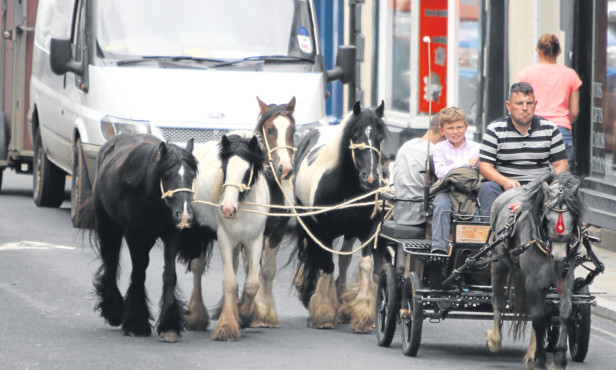
Travellers have hit back at claims that legislation is needed to control them.
Over the past two weeks we have revealed the growing cost of dealing with illegal Traveller encampments and how a catalogue of Traveller-related crime has gone unpunished.
However, campaign groups have hit back at claims they’re a crime-driven drain on taxpayers insisting they need MORE backing from local government to aid their fight against discrimination
They say there is a lack of drive to provide proper stopping places as they’re a vote loser with the electorate.
Joseph Jones, of the Gypsy Council, said: “There is a lack of government will to help our minority.
“We’re used as a political football because of the historic mistrust towards the community, with myths played on which could be removed in a few simple steps. One of those would be giving us more stopping places.”
Last week we reported how councils, police and other public bodies have been inundated with complaints about Travellers. Many of them centred on instances of aggression, anti-social behaviour and roadside fly-tipping.
But community insiders and researchers are adamant the root of the problem lies not within the Gypsy fraternity, but instead with the UK and Scottish governments.
Activist Mr Jones continued: “It was decided in the 1960s that Gypsies should be discouraged from travelling and should live a more settled lifestyle. To do that, they would build sites for Travellers to live on.
“Local authorities were given an obligation to provide sites but many didn’t, meaning that from the outset there wasn’t enough places for Gypsies to live.
“Since then there has been no increase to match the rise in size of the travelling community. That’s led to Gypsies having to resort to living in bricks and mortar and, in that environment, they don’t thrive. They’re subject to hostility from those living around them.”
This lack of sites, many believe, is what triggers anti-social complaints against the community. With thousands of families now choosing to live in houses rather than on the road, they find themselves targeted for their choice of lifestyle.
With five unauthorised sites springing up across Scotland every week and millions of pounds spent annually to deal with the problem, one Lanarkshire-based Gypsy mother said everyone in the ethnic minority feels it is clear more needs to be done to help them.
She said: “There are the minority who are always on the move and can leave rubbish trails and mess behind.
“But there are many families who just want to settle in a house, pay their council tax and work an honest job. However, that’s made impossible by the fact that as soon as your neighbours find out you’re Gypsies, it often leads to harassment and a life back on the road.”
Amnesty International Scotland’s Siobhan Reardon added: “We want to ensure the rights of everyone living in Scotland are respected by all.
“Local councils and the Scottish Government have an important part to play in ensuring this happens.”
MSP leaps to defence of Travellers
An independent MSP has claimed our expose on Travellers was “shameful” and “lurid”.
Our exclusive series lifted the lid on the extent of the misery caused by Travellers setting up illicit camp sites. Freedom of Information requests revealed a list of complaints about alleged criminal activity.
They also showed how taxpayers had been forced to fork out more than £13 million over 10 years to deal with the issue.
However, in a letter, which was published on Facebook and Twitter before it reached this newspaper, John Finnie said our expose lacked “understanding” and was a “pathetic uttering of age old prejudice”.
This is despite failing to point out any inaccuracies in the copy.
The retired policeman who quit the SNP two years ago wrote: “The lurid content articulated the age old animosity to the gypsy community and will have done nothing to enhance negative and unwarranted perceptions.
“Research shows many traditional stopping off places have been blocked off and not reinstated. It would be very helpful if you could provide details of the sites and the sums spent.”
We have since provided Mr Finnie with details of our findings.
A former police colleague of Mr Finnie’s also wrote in to praise our investigation.
Ian Murray said: “I’ve spent years trying to get the authorities to face up to this problem but to no avail.”

Enjoy the convenience of having The Sunday Post delivered as a digital ePaper straight to your smartphone, tablet or computer.
Subscribe for only £5.49 a month and enjoy all the benefits of the printed paper as a digital replica.
Subscribe